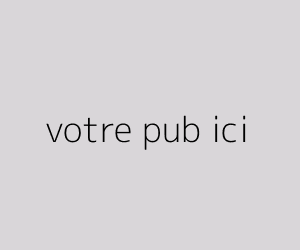- 11:13Urgent Calls and Delayed Action: A Closer Look at Valencia's Flood Response Crisis
- 10:40Over a Decade of Service to Casablanca's Mobility
- 09:57Trump's Return to Power: Promises and Challenges Ahead
- 09:22Morocco's Unyielding Commitment to Its Territorial Integrity in the Sahara
- 08:48Anticipating Change: U.S. Administration Braces for Migrant Influx Ahead of Trump Presidency
- 08:10Urgent Evacuations as Mountain Fire Rages in Ventura County
- 07:34Drought Devastates Amazon Basin: Over 420,000 Children in Crisis
- 18:05Harris Expected to Concede 2024 Presidential Race to Trump in Historic Address
- 17:30Kashmir Assembly Advocates for Restoration of Autonomy Amidst Political Turmoil
Follow us on Facebook
Revolutionary AI-Powered Brain Implant Restores Man's Bilingual Voice
In an extraordinary breakthrough, a groundbreaking synergy between neurosurgery and artificial intelligence has granted a voice back to a man who had lost the ability to speak. For the first time, a bilingual individual, rendered incapable of articulating words, has been able to communicate in both his languages through a brain implant coupled with an AI system. This technological feat stands as a beacon of hope for those suffering from mutism.
The implant, once surgically placed within the patient's brain, captures the electrical signals associated with his brain activity as he attempts to speak. These signals are then decoded by the AI, translating them into comprehensible words and phrases.
The Remarkable Journey of Pancho
Pancho, the man at the heart of this extraordinary technological advancement, had his life upended at the age of 20 when a stroke left him paralyzed and unable to speak distinctly. Reduced to mere grunts and groans, Pancho had completely lost the ability to communicate with the world around him.
In his thirties, a new glimmer of hope emerged. Pancho crossed paths with Edward Chang, a neurosurgeon at the University of California, San Francisco, who was passionate about the potential of brain-computer interfaces. Together, they decided to explore the lingering effects of the stroke on Pancho's brain. In 2021, a study published in The New England Journal of Medicine marked a turning point in Pancho's life. During this research, Chang's team implanted electrodes on Pancho's cerebral cortex, allowing them to record his neuronal activity with remarkable precision.
These once-incomprehensible electrical signals were decoded by an AI system, transformed into words and phrases displayed on a screen. For the first time in years, Pancho could express his thoughts and feelings. His first sentence, "My family is outside," was interpreted in English, a language he had learned after his stroke.
But for Pancho, a native Spanish speaker, his mother tongue remained deeply rooted in his identity and memories. As Chang explained, "The languages a person speaks are actually closely tied to their identity ... That's why our long-term goal has never been simply to replace words, but to give people back their ability to communicate."
The Implant and AI: A Powerful Synergy
To fully restore Pancho's bilingual communication abilities, another scientific team, led by Chang's doctoral student Alexander Silva, set out to develop an AI system capable of deciphering Pancho's bilingual language, enabling him to express himself fluently in both English and Spanish.
The team devised an ingenious strategy. They began by training the AI system on a set of nearly 200 words that Pancho attempted to pronounce. Each spoken word generated a distinct neural pattern, recorded by the electrodes implanted in his brain. The AI system, equipped with two distinct modules (one for Spanish and one for English), then analyzed the phrases Pancho attempted to formulate. Each module selected the word that best matched the detected neural pattern, taking into account the language Pancho was using.
Next, the modules constructed complete sentences by evaluating the probability of each subsequent word. The final result, also displayed on a screen, was the sentence with the highest probability of being the one Pancho intended to express. The results were astounding, with this hybrid approach enabling the modules to distinguish English from Spanish with remarkable 88% accuracy. Pancho's sentences were decrypted with a 75% success rate. Subsequently, Pancho was finally able to engage in natural, unscripted conversations with the research team, breaking the silence that had constrained him for so many years.
Pancho's story is, above all, a testament to the immense potential of brain-computer interfaces. This unprecedented success may be the first of many, serving as an example for future studies and restoring hope for individuals suffering from communication disabilities to regain their autonomy. A true triumph of scientific and human innovation, and perhaps the promise of a distant future where oral communication will never again be a barrier for individuals. Let us not forget that heart transplants were once perceived as an insurmountable obstacle in the 1960s, until the first successful operation in 1967. Today, this procedure is relatively common, with thousands occurring each year in France. Perhaps Pancho's implant will follow a similar trajectory.



